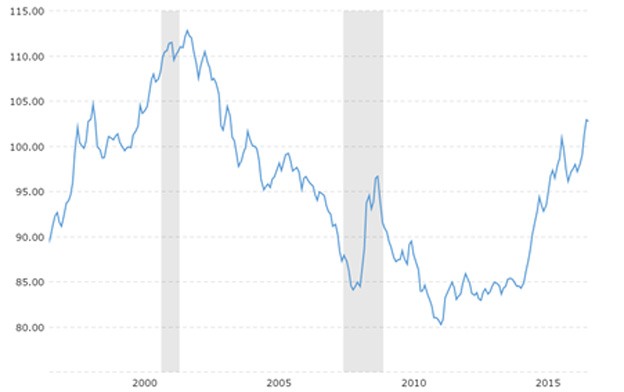What an America First Trade Policy Could Mean for the US Dollar
Currencies / US Dollar Feb 08, 2017 - 01:06 PM GMTBy: John_Mauldin
John Grandits : A key pillar of Donald Trump’s presidential campaign, and now policy formation, is an “America First” approach. So far, this has entailed much discussion around negotiating more favorable trade deals, withdrawing from possible participation in the Trans-Pacific Partnership, citing potential currency manipulators, and construction of a wall along the Mexican border, to name a few.
While it will take months, and maybe even years for his agenda to play out, a key outcome for investors will be the direction of the US dollar. Still the world’s reserve currency, billions of dollars in transactions are settled in USD every day—including for most commodities.
Prior to Trump taking office, many prominent investors and analysts were calling for continuation of US dollar strength based on tighter monetary policy and stronger economic growth. However, in recent weeks the dollar has weakened amid realization the America First policy touted by Trump may not be dollar positive.
We saw this in 2002, when George W. Bush imposed aggressive trade tariffs (up to 30% on imported steel) in an attempt to rescue the declining US steel industry. While the move did help consolidate the industry through more than $3 billion in restructuring, it did negatively impact domestic consumers of foreign steel, such as car manufacturers.
What’s not debatable is its effect on the US dollar.
After peaking in early 2002, the dollar declined 11% following the tariff announcement. The tariff was removed in December 2003 after the World Trade Organization deemed it illegal and said countries such as Japan and those in the European Union could retaliate.

Not coincidentally, gold rallied 30% during this time.
By nature, and sometimes to their detriment, investors place more emphasis on what happened recently instead of taking a broader view. The US dollar has been in a major bull market against most currencies since 2011. This has also occurred roughly in line with gold’s decline from $1,900 to $1,050/oz. in December 2015.
Are the actions being taken by Trump’s administration to spur domestic manufacturing, jobs and economic output a precursor to a weaker dollar and another bull market in gold?
Only time will tell, but investors should keep close watch on this developing scenario and adjust portfolios accordingly.
Free Ebook: Investing in Precious Metals 101: How to buy and store physical gold and silver
Download Investing in Precious Metals 101 for everything you need to know before buying gold and silver. Learn how to make asset correlation work for you, how to buy metal (plus how much you need), and which type of gold makes for the safest investment. You’ll also get tips for finding a dealer you can trust and discover what professional storage offers that the banking system can’t. It’s the definitive guide for investors new to the precious metals market. Get it now.
John Mauldin Archive |
© 2005-2022 http://www.MarketOracle.co.uk - The Market Oracle is a FREE Daily Financial Markets Analysis & Forecasting online publication.



